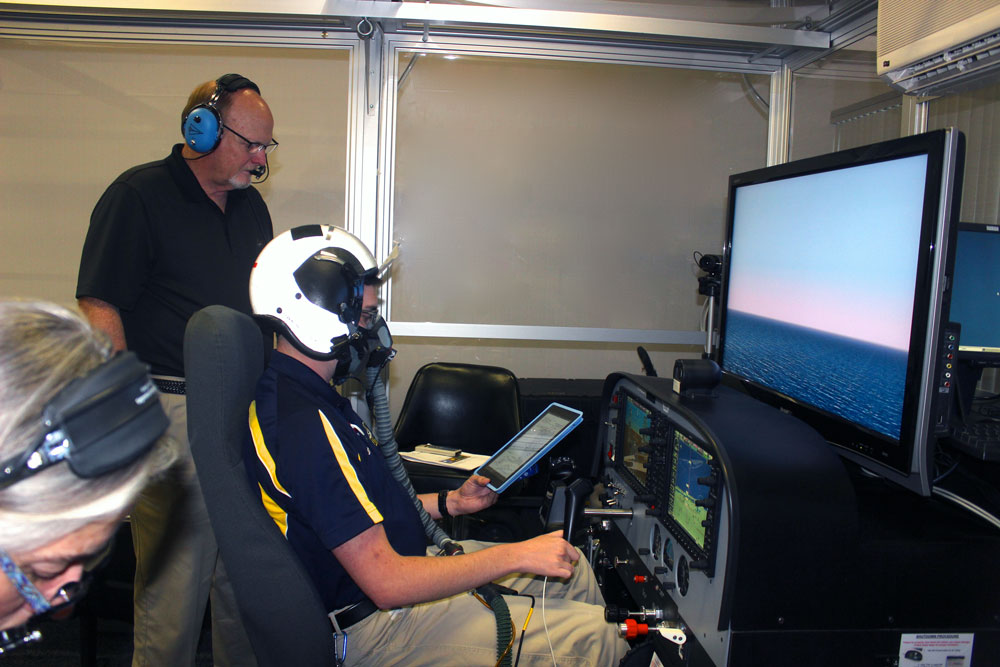Helping pilots swiftly recognize and respond to the first signs of deadly oxygen deficiency, or hypoxia, is the focus of two Embry-Riddle research projects that contributed to a U.S. Navy project that won a 2018 Innovation Award from the Naval Air Warfare Center Aircraft Division.
The separate projects are led by Assistant Professor of Aeronautical Science Janet K. Marnane and Associate Professor of Human Factors Joseph R. Keebler.
Studying Pressure-On-Demand Air Device
The goal of Marnane’s project is to assess the impacts of the On-Demand Mask-On Hypoxia-Training device developed by Lynntech Inc., a Texas-based company. While most hypoxia-training devices deliver a continuous flow of air, the Lynntech device delivers pressure-on-demand air without exposing the pilot to air starvation when breathing becomes heavier, Marnane explains.
As part of the research, 30 research subjects have so far participated in simulated flights in Embry-Riddle’s High-Altitude Normobaric Chamber.
Assessing Lifestyle Factors
For his project, Keebler is looking at the relationship between symptoms of hypoxia, demographic variables and lifestyle factors among pilots — from their body mass index and flight hours to their caffeine and alcohol consumption, as well as whether or not they have previously experienced hypoxia.
Graduate students including Richard Simonson (’17), Emily Anania (’17) and Christopher Rarick have played a key role in Keebler’s research. They have visited naval bases to collect data on some 100 pilots who performed tasks inside hypoxia training facilities.
The Navy’s Hypoxia Training Research and Development projects, supported by Embry-Riddle, are setting the stage for “innovative training solutions to better equip the fleet in dealing with aeromedical issues,” says Beth F. Wheeler Atkinson, senior research psychologist with the Naval Air Warfare Center Training Systems Division.
Pictured at top: Joshua Swain takes part in pilot hypoxia training inside Embry-Riddle’s High-Altitude Laboratory. Photo by Glenn Harmon.
